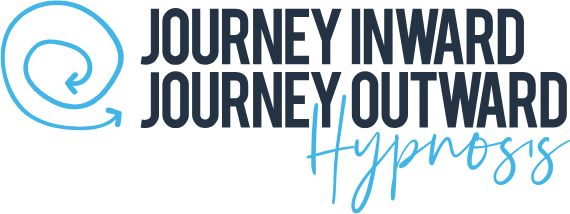Real-World Tips to Help Teens & Young Adults Turn ADHD into a Superpower
ADHD isn’t some flaw that needs fixing—it’s a different wiring of the brain. And like any other wiring, it can power a lamp or light up an entire city, depending on how you use it. If you're a teenager or young adult trying to navigate a world that often feels like it wasn’t built for you, you’re not alone. The goal isn’t to get rid of ADHD—it’s to learn how to use the parts of it that give you an edge and manage the parts that trip you up.
Reframe the Narrative
One of the hardest things about ADHD is the quiet (and not-so-quiet) messaging that you’re somehow behind everyone else. You might lose your keys four times in a day, forget a birthday party, or hyperfocus on one part of a project while ignoring the rest. That’s not laziness or a lack of willpower—it’s
your brain processing things differently. When you stop viewing ADHD as a deficit and start seeing it as a difference, you stop fighting yourself and start working with yourself.
Find the Fun in Focus
Teens and young adults with ADHD often chase dopamine like it’s the last slice of pizza at a party—and that’s not a bad thing. Dopamine is your brain’s reward chemical, and the ADHD brain is under-stimulated by default, which is why boring tasks feel like pushing a boulder uphill. But here’s the cheat code: build your work and routines around what naturally interests you. Whether it’s turning study time into a game, listening to music while doing chores, or using color-coded lists,
finding ways to inject novelty into routine tasks can unlock focus that otherwise feels impossible.
Use Time Like a Sculptor—Chunk It, Shape It, Own It
The ADHD relationship with time is weird. There’s “now” and “not now,” and everything in between gets blurry. That’s why
time blindness is a real struggle—but also why breaking time into visual, bite-sized blocks can make all the difference. Try timeboxing your day, setting visual timers, or using analog clocks to externalize the passage of time so it doesn’t sneak up on you like a pop quiz. You’re not bad at managing time—you just need a different kind of clock.
Protect Your Energy, Not Just Your Schedule
Everyone talks about time management, but for folks with ADHD, energy management
might be even more important. You can have a perfectly planned day and still crash hard by 2 p.m. if you’re mentally fried. Learn your own energy rhythms—when you focus best, when you need breaks, and when you can power through with a snack and a playlist. Schedule your toughest tasks when your brain feels sharpest, and don’t feel guilty for stepping away when you hit a wall—burnout doesn’t help anybody.
Make Friends With Failure—It’s Part of the Blueprint
Here’s the thing about trying to turn ADHD into a superpower: sometimes it’ll still knock you flat. You’ll forget to turn something in, zone out in the middle of a conversation, or spiral into a distraction rabbit hole. That’s not proof that you’re doomed—it’s proof that you’re human. The trick is not to make every failure personal; instead,
treat it like data. What worked? What didn’t? What could you change next time? Progress isn’t linear, and perfection’s a lie anyway.
The Creative Edge of an ADHD Brain
With ADHD, you naturally spot connections others overlook, and that divergent thinking isn’t a flaw—it’s fuel for innovation. When you give yourself permission to think visually, talk through messy ideas out loud, or sketch half-formed concepts onto sticky notes, you’re not being disorganized—you’re working with your brain, not against it. The world needs more ideas from people who color outside the lines, and when you stop trying to fit into someone else’s system, you start building your own from the ground up—just like the neurodivergent entrepreneurs who are already out there changing the game.
Leverage Hyperfocus Without Letting It Wreck Your Life
Hyperfocus is like a superpower with a dark side. When you're in the zone, it feels like you’re flying—you can crush a project, learn a skill, or lose yourself in a world you created. But left unchecked, hyperfocus can mean skipping meals, ignoring texts, and forgetting everything else that matters. The move here is to
plan for hyperfocus: set timers, tell people when you’re diving deep, and create “exit ramps” so you don’t get stuck in the tunnel. When you learn to control it, hyperfocus can become one of the most powerful tools in your arsenal.
Surround Yourself With People Who Get It
You don’t need a huge crew, but you do need a few people in your corner who don’t make you feel like you’re “too much.” Friends who remind you to eat, family members who accept that your room’s a mess when your brain is too loud, teachers or mentors who work with you instead of scolding you. ADHD is easier to manage when you’re not managing it alone. If you can, connect with other neurodivergent
folks who speak your language—it’s easier to grow when you don’t feel like you’re faking it all the time.
You’re not a broken machine—you’re a wild, brilliant system that just doesn’t run on default settings. ADHD doesn’t need to be hidden or hated; it needs to be harnessed. The world may not be designed with your brain in mind, but that doesn’t mean you can’t thrive in it—on your own terms, in your own way. The sooner you realize your brain is wired for something extraordinary, the sooner you can stop apologizing for who you are and start unleashing the spark that makes you, you.
Take the first step toward a happier, more confident you with a free clarity consultation at
Journey Inward Journey Outward Hypnosis.







